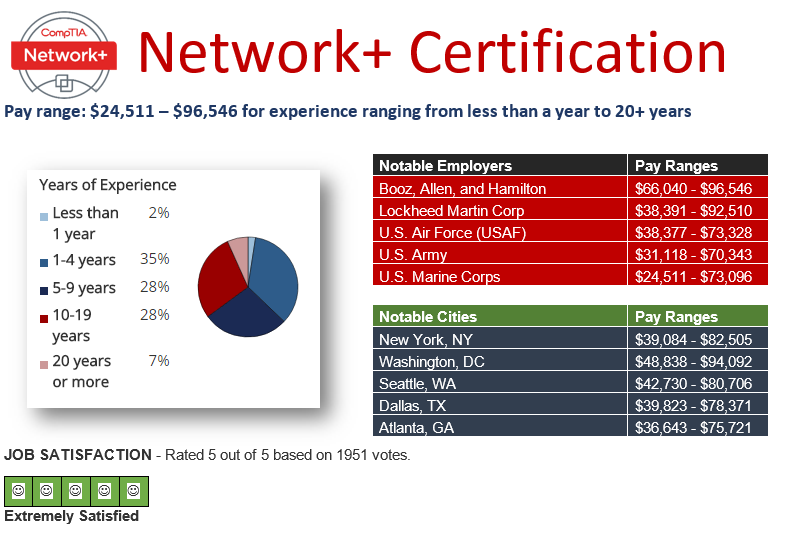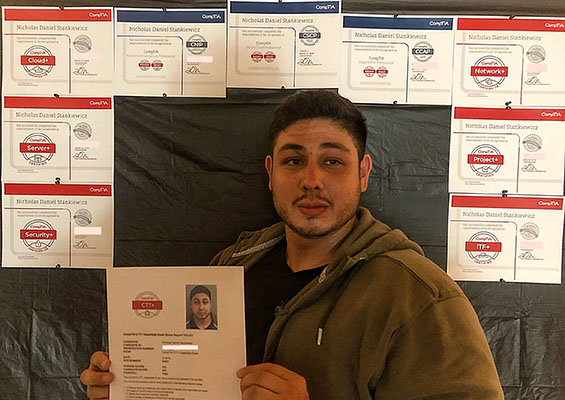CompTIA is a well-recognized provider of IT certification exams, with over 2 million certifications issued to date. If you’re looking to add a CompTIA certification to your resume, here’s how to do it.
What Is CompTIA?
The Computing Technology Industry Association is an American non-profit trade association that issues professional certifications for the information technology industry. It is considered one of the top IT trade associations in America. Most people refer to CompTIA as simply “CompTIA.” The organization was founded in 1982 and has its headquarters in Downers Grove, Illinois.
There are many different types of CompTIA certifications, but the most popular ones include the A+, Network+, and Security+ certifications. These exams test for entry-level knowledge in various IT subject areas.

A+ is a certificate that entry-level computer technicians can earn to prove their competency in hardware and software troubleshooting. The A+ is one of the most popular certifications in the world, with over 1 million people certified since its inception in 1993.

Network+ is a certification that proves a technician’s ability to configure, manage, and troubleshoot networked systems. It is a popular choice for those looking to start a career in network administration or engineering.

Security+ is a certification that validates an individual’s skills in securing networks and data. It is a common first step for those interested in careers in information security or cybersecurity.
How Long Does It Take to Get the Certificate?
CompTIA certification exams are not easy, but they are not impossible. With enough study and practice, most people can pass the exam within a few months. The preparation for their exams takes up to six months. So, overall, if you planned to get the certificate, you should consider at least seven to eight months.
Is CompTIA Certification Worth It?
CompTIA certifications are well-respected in the IT industry and can help you get your foot in the door with many employers. In addition, having a CompTIA certification on your resume can help you stand out from other job candidates.
While there is no guarantee that getting a CompTIA certification will land you a job, it is definitely a valuable asset to have.
Is CompTIA A+ Enough to Get a Job?
The CompTIA A+ certification often gets job applicants hired for entry-level IT positions, but only if the applicant also has soft skills like effective communication and a good attitude.
How to Put CompTIA Certification on Your Resume?
Once you have earned your CompTIA certification, you’ll want to add it to your resume. But how should you go about doing that?
First, it may sound strange at first, but you have to read closely the employer`s requirements for the position you are applying for. Most employers include skills that they would like their candidates to have. Some of these skills may be required, while others may be nice-to-haves. One of the employers` requirements is usually certifications.

If the employer requires certification and you have it, be sure to list it prominently on your resume. You can usually find a section called “Certifications” or “Professional Development” where you can list your CompTIA certification. This is typically located towards the bottom of your resume, after your Education and Work Experience sections. In a few short paragraphs, convey why you are qualified to do the job. Also, don’t forget to include any years of experience or relevant degrees if any. This is where you discuss your CompTIA certification for the first time.
Also, keep in mind that a summary of your qualifications is another effective method to include your CompTIA a+ certification on your resume. This section of your resume, as the name suggests, is written in a summary style, i.e., it simply needs to contain limited information. It would be beneficial to include a link to your certification profile in this section. By doing this, you will make it easier for the employer to find more information about your qualification.
If you don`t have any working experience yet, you can still put CompTIA certification on your resume. In this case, it is best to list it in the Education section. Here you should also include the name of the institution where you took the exam and the date when you passed it.
Is It Better to Put CompTIA Certification to the Main Body of Your Resume?
Sometimes it can be argued that it is better to put your CompTIA certification in the main body of your resume, i.e., under your name and contact information. The reason for this is that you want the employer to see it as soon as they start reading your resume.
Putting your certification in the main body of your resume also has its disadvantages. The most significant one is that it takes up valuable space on your resume that could be used to list other qualifications or experience. It is quite simple to add qualification details in the body of your resume. You will usually have to make “qualifications” or “certifications” subsections in your resume.
So, the first step is to name the title of your certification. Mention the name of the institution, the location, and the date when you were certified. Avoid abbreviations that may be confusing or not easily recognized. It’s also critical to include the name of the host company if you want your employer to be able to validate the validity of your accreditation. It’s also essential that you type this correctly.

The next step is to write down the date you earned your certification. You can write it in different ways, but the most common one is “Date acquired: Month Year.” The data will first assist your potential employer in determining how long it has been since you completed the skills required to be certified. It also provides comprehensive facts that can assist your recruiters to verify your certification.
Finally, mention the skills that you have got from the CompTIA Certification. These skills will be relevant to the job that you are applying for, and it is essential to mention them here. It would be best if you also included a link to your certification profile or any other related materials that the employer can use to verify your skills.
So, to sum up, here is an example of what it should look like:
1)CompTIA Network+ Certification
Issued: August 2020
Relevant Skills: Setting up, caring for, individualizing, and using regular computers.
2)CompTIA A+ Certification
Issued: In progress
Achieved Skills: PC hardware and software troubleshooting, configuring networks, and much more.
3)CompTIA Security+ Certification
Issued: May 2019
Skills Obtained: Endpoint security, network security, cryptography, etc.
This is how you should list your CompTIA certification on your resume to make it look both professional and comprehensive. By following these simple steps, you will increase your chances of getting hired by showing that you have the skills and qualifications required for the job.
Tips On How to Make Your Resume More Attractive
Many applicants may have an awesome set of skills and nice work experience, but the way in which they form their resumes can often be the deciding factor in whether they get an interview or not.
Your resume is essentially your first impression of a potential employer, so it`s essential to make sure that it looks its best. Here are some tips on how you can make your resume more attractive to employers:
- Use typography to make your resume easy to read.
When an employer is looking through a pile of resumes, they will most likely only spend a few seconds skimming through each one. This means that you need to make sure that your resume is easy to read and digest. One way to do this is by using typography effectively.
Use clear and legible fonts, and make sure that there is enough white space on the page. You can also use headings and subheadings to break up the text and make it easier to scan.

- Use simple words and action verbs.
When writing your resume, try to use simple words and action verbs. This will make your resume more readable and easier to understand. Avoid using jargon or technical terms that the employer may not be familiar with.
Instead, focus on using language that clearly communicates your skills and experience. For example, instead of saying “responsible for managing a team of salespeople,” you could say “ oversaw a team of salespeople.”
- Highlight your most relevant skills and experience.
When an employer is looking at your resume, they will be most interested in your skills and experience that are relevant to the job that they are hiring for. This means that you should highlight these aspects of your background in your resume.
Make sure to tailor your resume to each job that you apply for, and include only the information that is relevant to the specific position. This will make your resume more concise and focused, and it will increase the chances that the employer will notice the skills and experience that you have to offer.
- Use numbers and metrics to quantify your accomplishments.
When describing your work experience and accomplishments, try to use numbers and metrics to quantify your achievements. This will make them more concrete and easier for the employer to understand.
For example, instead of saying “ increased sales by 20%” you could say “ increased sales by $20,000.” This will give the employer a better idea of the scope of your accomplishments and the impact that you have made in your previous roles.
- Keep your resume up to date.
Make sure to keep your resume up to date with your latest skills and experience. You should also update it regularly to reflect any changes in your background or career goals. This will show employers that you are proactive and that you are keeping up with the latest trends in your field.
- Proofread your resume carefully.
Before you submit your resume, make sure to proofread it carefully for any grammar or spelling errors.
